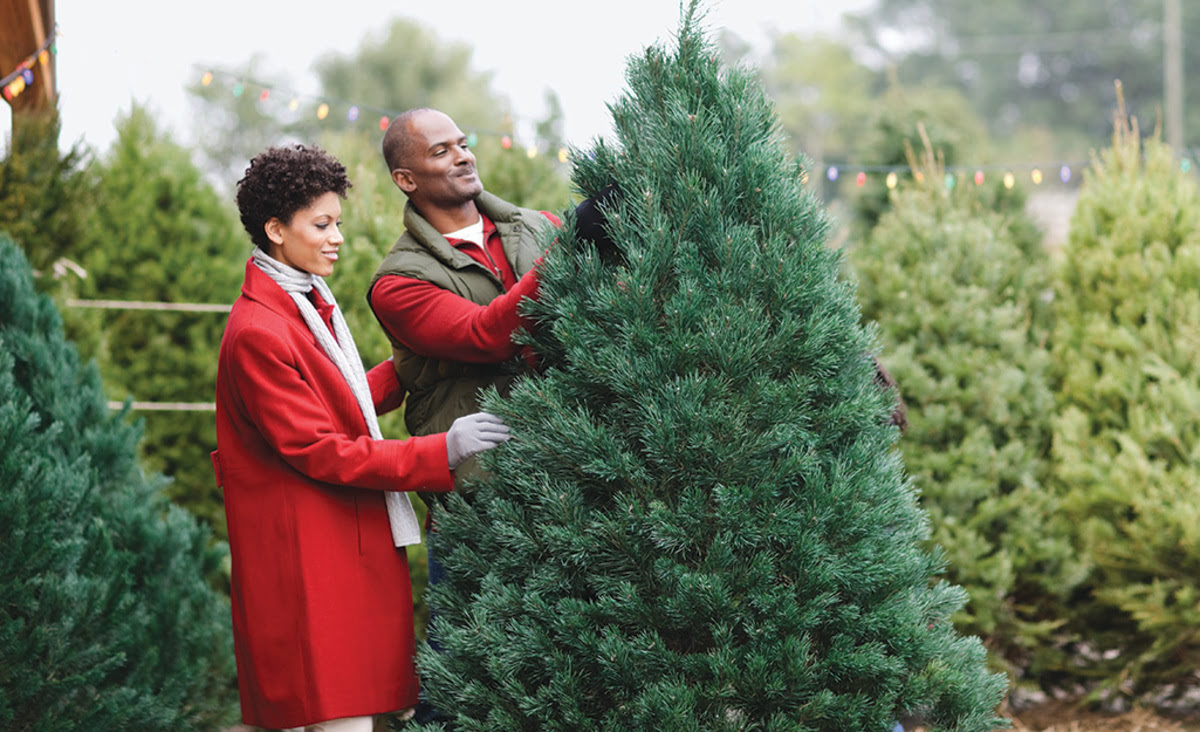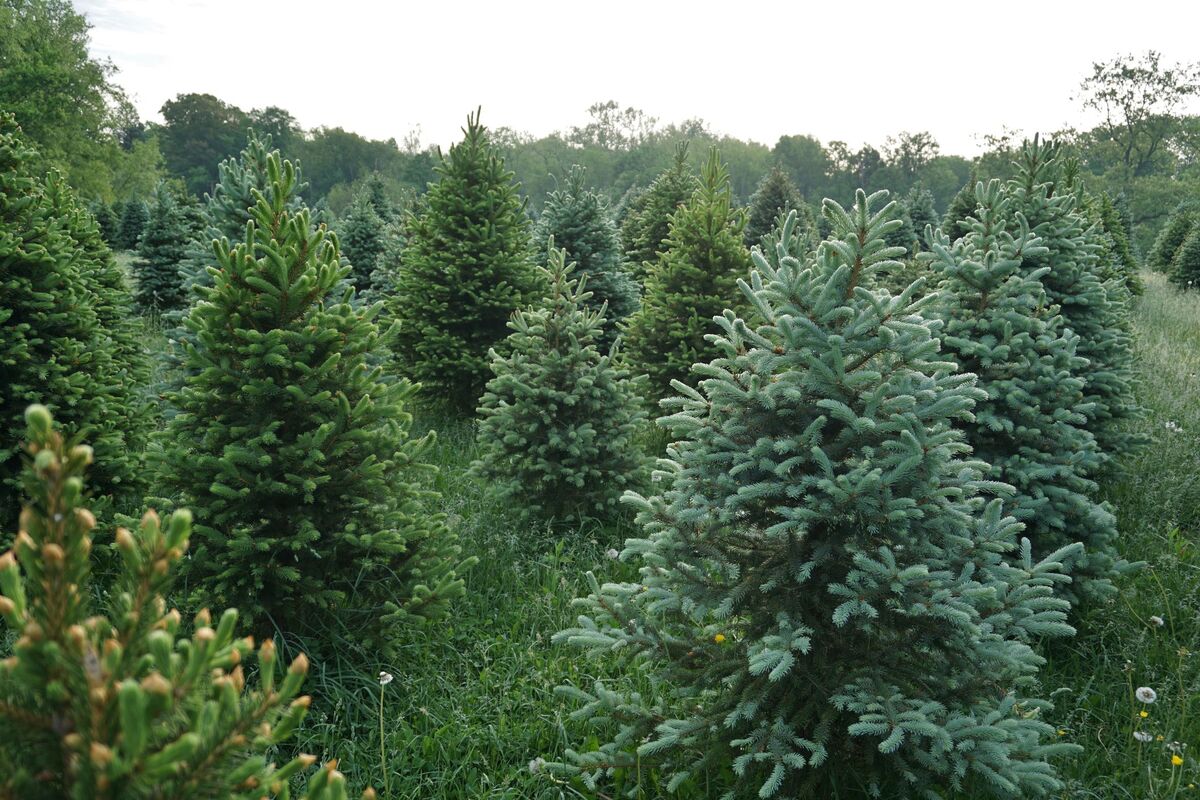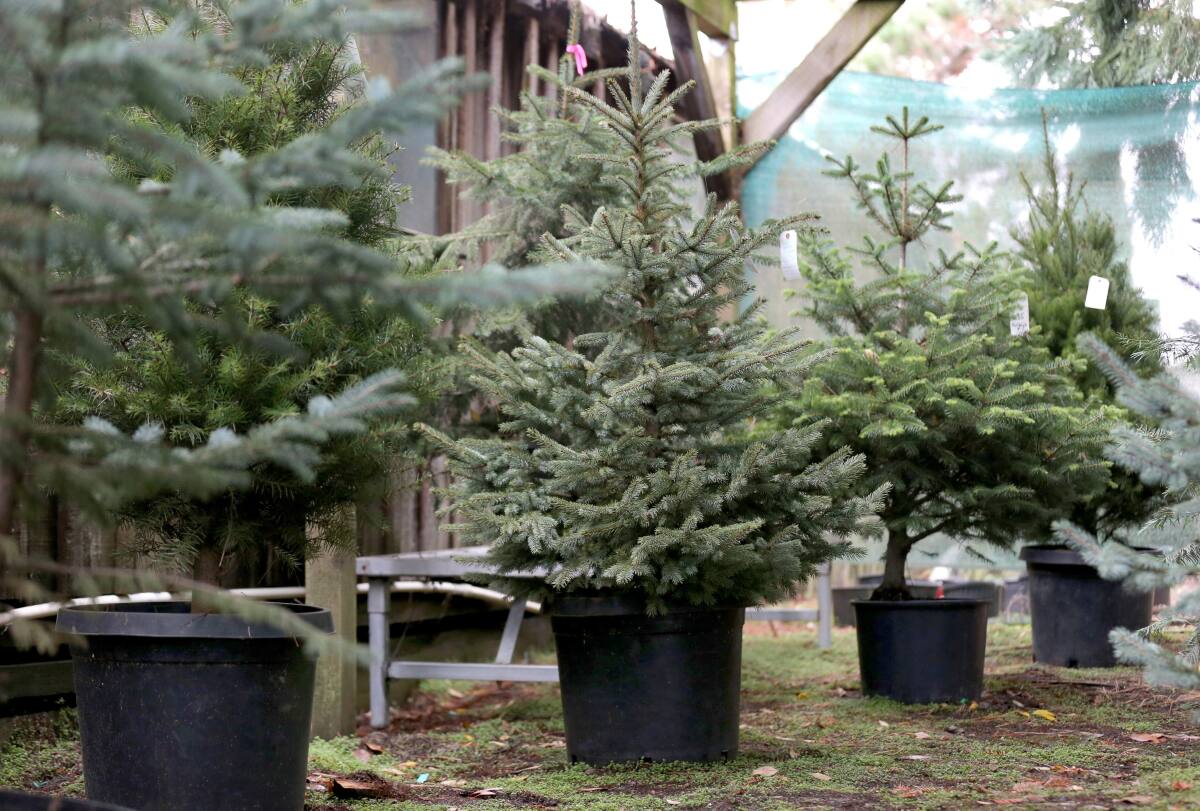Home>Gardening News and Trends>Latest News>What Country Started Christmas Trees


Latest News
What Country Started Christmas Trees
Modified: January 22, 2024
Discover the latest news about the country that started the tradition of Christmas trees. Explore the fascinating origins and cultural significance behind this iconic holiday symbol.
(Many of the links in this article redirect to a specific reviewed product. Your purchase of these products through affiliate links helps to generate commission for Chicagolandgardening.com, at no extra cost. Learn more)
Table of Contents
Introduction
The tradition of decorating Christmas trees is a cherished custom that is widely celebrated around the world. Each year, millions of families gather together to adorn their homes with beautifully adorned evergreen trees, adorned with lights, ornaments, and garlands. But have you ever wondered where this tradition originated? Which country started the tradition of Christmas trees?
The origins of Christmas trees can be traced back to ancient times, long before the arrival of Christianity. Tree worship was a common practice in many cultures, symbolizing fertility, rebirth, and the enduring power of nature. In pagan societies, evergreen trees held a special significance during the winter solstice, as they were believed to possess protective and healing properties.
However, it was in Germany during the 16th century that the modern-day tradition of Christmas trees truly began to take root. Legend has it that Martin Luther, the Protestant reformer, was captivated by the beauty of a starlit winter sky and decided to recreate it by bringing an evergreen tree into his home. He decorated it with candles, symbolizing the stars, and lit them to mimic the dazzling night sky.
Over time, the tradition of setting up Christmas trees spread throughout Germany, becoming a common practice among Lutheran households. It was primarily seen as a religious symbol, representing the tree of paradise in the Garden of Eden. The branches were decorated with fruits and cookies, symbolizing the fruits of the tree of knowledge.
In the early 19th century, the tradition of Christmas trees gained widespread popularity when Prince Albert, the German-born husband of Queen Victoria, introduced the custom to the British royal family. The beautiful sight of the royal family gathered around a decorated tree captured the imagination of the British public, sparking a trend that quickly spread throughout the country.
The custom of Christmas trees further gained popularity when German immigrants brought the tradition to North America. The practice of setting up Christmas trees became an integral part of American holiday celebrations, and it quickly became a beloved symbol of the Christmas season.
Today, the tradition of Christmas trees has evolved into a global phenomenon. Countries around the world have embraced this timeless symbol of joy and unity. Regardless of cultural or religious affiliations, the sight of a beautifully decorated Christmas tree has the ability to evoke warm feelings of nostalgia and holiday cheer.
As we delve deeper into the origins and spread of the Christmas tree tradition, we will discover the fascinating stories of how this beloved custom has transcended time and borders, bringing light and joy to countless homes around the world.
Origins of Christmas Trees
The tradition of using evergreen trees as symbols of fertility and rebirth dates back to ancient times. In many cultures, such as the Egyptians, Romans, and Druids, evergreen trees held sacred significance during winter celebrations.
For the Romans, the festival of Saturnalia celebrated the return of light and the winter solstice. They would decorate their homes with evergreen branches as a reminder of the coming spring. Similarly, the ancient Egyptians believed that the sun god Ra’s journey through the sky was renewed during the winter solstice, and they would decorate their homes with palm leaves, symbolizing the triumph of life over death.
Tree worship was also prevalent among the Druids, the Celtic priests. They believed that evergreen trees, particularly the oak tree, had spiritual powers and represented eternal life. During the winter solstice, the Druids would decorate their temples and homes with evergreen branches to symbolize the enduring power of nature.
The modern-day tradition of Christmas trees can be traced back to Germany in the 16th century. As the story goes, Martin Luther, the Protestant reformer, was walking through a snowy forest one winter evening. He was struck by the beauty of the sparkling stars amidst the evergreen trees.
Inspired by this sight, Luther cut down a small evergreen tree, brought it home, and set it up in his living room. He adorned the tree with candles to represent the stars and lit them to recreate the wondrous scene he witnessed in the forest. This act of illuminating the tree symbolized the presence of Christ, the Light of the World.
Initially, the concept of Christmas trees was embraced by Lutheran households in Germany. The evergreen tree was seen as a representation of the tree of paradise in the Garden of Eden. The branches of the tree were adorned with fruits and cookies, symbolizing the fruits of the tree of knowledge. This practice was primarily observed on Christmas Eve, and the tree would remain in the home until the Feast of Epiphany.
As the custom gained popularity, it spread beyond the Lutheran community and became a cherished tradition among other Christian denominations in Germany. The Christmas tree became a focal point of celebrations, with families gathering around it to exchange gifts and join in festive songs and dances.
The tradition of Christmas trees continued to evolve and spread throughout Europe in the following centuries. In the early 19th century, the German-born Prince Albert introduced the custom to the British royal family. The sight of the royal family gathered around a decorated Christmas tree captured the public’s imagination and instigated a trend that quickly spread throughout Britain and beyond.
Today, the use of evergreen trees as Christmas decorations is a global phenomenon. The tradition has expanded beyond its religious origins and is now embraced by people of diverse cultures and backgrounds. The Christmas tree continues to serve as a symbol of joy, hope, and renewal during the holiday season, bringing warmth and beauty into homes around the world.
The Tradition Spreads
After its initial establishment in Germany, the tradition of Christmas trees began to spread throughout Europe. The popularity of the custom was fueled by increased trade and cultural exchange during the 19th century.
Germany, being at the forefront of the Christmas tree tradition, played a significant role in spreading the practice to neighboring countries. German immigrants took the tradition with them as they migrated to different parts of Europe and North America, introducing the Christmas tree to new communities.
In the early 19th century, the Christmas tree tradition gained widespread recognition when Queen Victoria’s husband, Prince Albert, introduced it to the British royal family. The royal couple’s Christmas tree, beautifully decorated with ornaments, lights, and presents, was depicted in newspapers and magazines, capturing the public’s imagination and inspiring them to follow the same tradition.
As Europe entered the Victorian era, the influence of the British Empire helped to spread the Christmas tree tradition to other parts of the world. British settlers in Australia, New Zealand, and Canada brought the custom with them, and it quickly became a beloved part of their holiday celebrations.
In North America, the tradition of Christmas trees was further popularized by German immigrants who settled in the United States. They continued to practice their cherished tradition of setting up Christmas trees, and their influence spread to the wider American population.
One key figure in the popularization of Christmas trees in America was the influential writer Washington Irving. In his 1820 book “The Sketch Book of Geoffrey Crayon,” Irving described the joyous atmosphere of a Christmas celebration, featuring a beautifully adorned tree as a centerpiece. His vivid description sparked interest in the tradition and helped to solidify the Christmas tree as an integral part of American holiday celebrations.
During the late 19th and early 20th centuries, the Christmas tree tradition continued to spread and evolve. The invention of electric lights in the 1880s added a new level of brilliance to the tree decorations, replacing the candles that were originally used. This innovation made the trees safer and more accessible to the general population.
As the tradition spread, different cultures and regions added their unique touches to the Christmas tree tradition. In France, for example, miniature versions of landmarks and figurines called “santons” are often placed under the tree. In Sweden, the Christmas tree is often decorated with straw ornaments as a symbol of the harvest season.
Today, the tradition of Christmas trees has become a global phenomenon, transcending cultural and religious boundaries. The practice of setting up and decorating a Christmas tree is a cherished tradition for millions of families around the world, symbolizing love, joy, and the spirit of togetherness during the holiday season.
Modern-Day Christmas Trees
The tradition of Christmas trees has evolved significantly over the years, reflecting changes in culture, technology, and personal preferences. Today, Christmas trees come in various shapes, sizes, and styles, allowing individuals and families to create their unique holiday displays.
Artificial Christmas trees have become increasingly popular in modern times. Made from materials such as PVC or PE, these trees offer convenience and durability. They can be reused year after year, eliminating the need to purchase a fresh tree each season. Artificial trees also come in a wide range of designs, from slim and space-saving options to full and lush varieties.
On the other hand, many individuals still opt for natural Christmas trees, which provide a fresh and authentic experience. Cut trees, often sourced from tree farms, are widely available during the holiday season. The scent of evergreen fills the air, creating a festive ambiance in homes and public spaces.
Nowadays, decorating a Christmas tree has become a creative and personalized endeavor. Traditional ornaments, such as shiny balls and delicate glass decorations, continue to be popular choices. However, many people also incorporate unique ornaments that hold sentimental value or reflect their personal interests and hobbies.
Christmas tree lights have also undergone significant transformations. In addition to traditional incandescent lights, LED lights have become a preferred option due to their energy efficiency and longevity. These lights come in various colors and can be programmed to create dazzling light shows and patterns.
Furthermore, themed Christmas trees have gained popularity in recent years. Families and individuals often choose a specific theme for their tree, reflecting their interests or hobbies. Themes can range from traditional winter wonderlands to specific characters from movies or books. These themed trees offer a touch of personalization and creativity.
It’s worth mentioning that eco-friendly practices have also influenced the modern-day Christmas tree tradition. Many people are now opting for potted Christmas trees that can be replanted after the holiday season. This promotes sustainability while still allowing the joy of a decorated tree during the celebrations.
The act of decorating the Christmas tree has become a cherished family tradition. It brings loved ones together, fostering a sense of togetherness and creating lasting memories. It is not uncommon for families to gather around the tree, playing festive music, exchanging gifts, and enjoying each other’s company.
With the advent of social media, sharing pictures of beautifully decorated Christmas trees has become a popular trend. People take pride in their creative and festive displays, inspiring others to do the same.
Whether it’s a towering artificial tree with sparkling lights or a modest natural tree adorned with homemade ornaments, the Christmas tree continues to hold a special place in the hearts of many. It serves as a symbol of joy, love, and warmth, bringing the spirit of the holiday season into homes across the globe.
Conclusion
The tradition of Christmas trees has a rich and fascinating history that spans centuries and cultures. What began as a pagan practice to celebrate the winter solstice eventually became intertwined with Christian beliefs and spread throughout the world.
From ancient times, when evergreen trees were revered for their symbolism of life and rebirth, to Martin Luther’s addition of candles to recreate the starlit sky, the concept of the Christmas tree has evolved and adapted over time.
The spread of the Christmas tree tradition can be attributed to factors such as German immigrants bringing the custom to new lands, the influence of the British royal family, and the enduring popularity of the tradition itself.
In today’s modern era, Christmas trees come in a variety of forms, from artificial trees that provide convenience and longevity to natural trees that offer a fresh and authentic experience. The act of decorating the tree has become a personalized and creative endeavor, with individuals choosing themes and incorporating unique ornaments.
Regardless of the type of tree or the decorations used, the Christmas tree remains a symbol of joy, love, and togetherness during the holiday season. It brings families and communities together, creating a warm and festive atmosphere that is cherished by millions around the world.
As we celebrate this beloved tradition year after year, let us remember the origins and history behind the Christmas tree. May it continue to serve as a reminder of the enduring power of nature, the beauty of shared traditions, and the joy that the holiday season brings to our lives.








